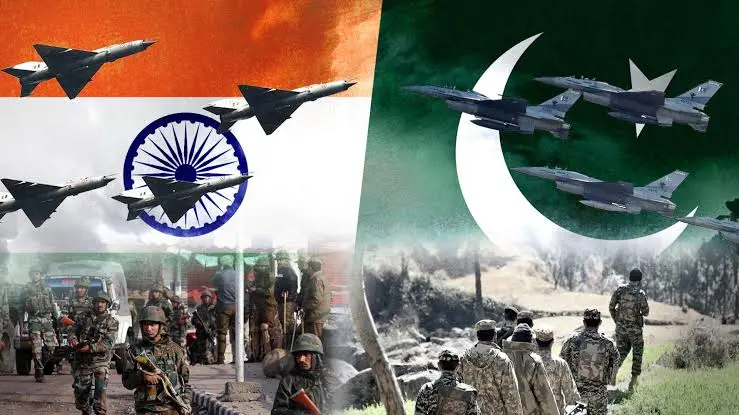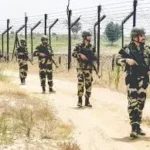This article explores the history of wars between Pakistan and India, collectively referred to as the “Pakistan India War,” from the 1947 partition to the 1999 Kargil conflict. It examines the causes, key events, and impacts of these significant events in South Asian history, providing insights into the ongoing tensions and the quest for peace.

The Pakistan India Wars: A Comprehensive Overview of Historical Conflicts
The relationship between Pakistan and India has been characterized by significant tension since the partition of British India in 1947, leading to multiple conflicts known as the “Pakistan India War.” These wars, primarily driven by the dispute over Jammu and Kashmir, have had profound effects on the region’s political, social, and economic landscape. This article provides a detailed examination of the four major wars between Pakistan and India—1947-1948, 1965, 1971, and 1999—along with an analysis of ongoing tensions, frequently asked questions, and references for further reading. By understanding these conflicts, readers can gain insight into the complexities of South Asian geopolitics and the challenges of achieving lasting peace.
Also Read
- Celebrating the Labour Day Holiday in Pakistan: A Tribute to Workers
- ACP Pradyuman: The Legendary CID Officer Loved Across India and Pakistan
- Exploring the BSF: The Backbone of India’s Border Security with Bangladesh
- EOBI Pension Latest Update 2025: Current Status and Future Expectations
- Latest on India Pakistan Current Relations: Tensions, Conflicts, and Hope for Peace
The 1947-1948 War
The first “Pakistan India War” commenced in October 1947, shortly after the partition of British India, which created the independent nations of India and Pakistan. The princely state of Jammu and Kashmir, with a Muslim-majority population and a Hindu ruler, Maharaja Hari Singh, became a focal point of contention. Initially seeking independence, the Maharaja faced an invasion by Pakistani tribal forces, prompting him to accede to India in exchange for military assistance. This triggered a full-scale conflict that lasted until January 1949.
Key events included India’s deployment of troops to repel the invaders and Pakistan’s subsequent involvement of regular forces. The war concluded with a United Nations-brokered ceasefire, establishing the Line of Control (LOC), which divided Kashmir. India retained approximately two-thirds of the territory, including the Kashmir Valley, Jammu, and Ladakh, while Pakistan controlled one-third, known as Azad Kashmir and Gilgit-Baltistan. The conflict resulted in significant casualties and displacement, setting a precedent for future disputes over Kashmir.
The 1965 War
The second major “Pakistan India War” occurred in 1965, again centered on the Kashmir dispute. Pakistan initiated Operation Gibraltar, a covert operation to infiltrate Indian-administered Kashmir and incite an insurgency against Indian rule. The operation failed to achieve its objectives, and India responded with a large-scale military offensive, escalating the conflict into a 17-day war. The war featured significant engagements, including the largest tank battle since World War II.
International intervention by the Soviet Union and the United States led to a ceasefire in September 1965, followed by the Tashkent Declaration in January 1966, which restored the pre-war status quo. India is generally considered to have had the upper hand at the ceasefire, though neither side achieved significant territorial gains. The war deepened mutual distrust and highlighted the persistent challenge of resolving the Kashmir issue.
The 1971 War
The 1971 “Pakistan India War” differed from previous conflicts as it was primarily driven by the crisis in East Pakistan (now Bangladesh) rather than Kashmir. The Bengali population in East Pakistan faced severe repression from the West Pakistan-dominated government, leading to the Bangladesh Liberation War. India supported the Bengali nationalist movement, providing military and logistical assistance.
In December 1971, Pakistan launched preemptive strikes on India’s western border, prompting India to intervene decisively in East Pakistan. The Indian military, alongside Bengali guerrillas, defeated Pakistani forces, culminating in the surrender of over 90,000 Pakistani troops on December 16, 1971. This war resulted in the creation of Bangladesh, significantly weakening Pakistan, which lost half its territory and a substantial portion of its military capacity. The Simla Agreement of 1972, signed between India and Pakistan, aimed to normalize relations and formalized the LOC in Kashmir.
The 1999 Kargil War
The Kargil War, another significant “Pakistan India War,” took place in 1999 when Pakistani troops and militants infiltrated Indian-controlled territory in the Kargil district of Kashmir, occupying strategic high-ground positions. India responded with Operation Vijay, a large-scale military operation to reclaim the occupied areas. The conflict, lasting approximately two months, saw intense fighting in challenging terrain.
India successfully recaptured most of the intruded territory, and international pressure, particularly from the United States, compelled Pakistan to withdraw its forces by July 1999. The war is considered a major military defeat for Pakistan, with significant casualties reported. It also underscored the risks of nuclear escalation, as both nations had developed nuclear capabilities—India in 1974 and Pakistan in 1998. The Kargil War highlighted the fragility of peace in the region and the ongoing challenge of the Kashmir dispute.
Ongoing Tensions and Conflicts
While the major “Pakistan India Wars” concluded with the Kargil conflict, tensions between Pakistan and India have persisted. Cross-border skirmishes, terrorist attacks, and diplomatic disputes continue to strain relations. Notable incidents include the 2008 Mumbai attacks, attributed to the Pakistan-based militant group Lashkar-e-Taiba, which killed 166 people, and the 2019 Pulwama attack, where 40 Indian paramilitary personnel were killed, leading to Indian airstrikes in Pakistan.
In August 2019, India’s revocation of Article 370, which granted special status to Jammu and Kashmir, further escalated tensions, with Pakistan condemning the move as a violation of international norms. Recent years have seen periodic ceasefire violations along the LOC, with both sides accusing each other of aggression. Despite these challenges, efforts toward peace, such as the 2003 ceasefire and the 2021 recommitment to it, indicate a desire to reduce hostilities. However, a comprehensive resolution to the Kashmir dispute remains elusive.
Frequently Asked Questions
- What was the main cause of the wars between India and Pakistan?
The primary cause of the “Pakistan India Wars” has been the dispute over Jammu and Kashmir, a region both nations claim in its entirety. Additional factors, such as political rivalries and regional power dynamics, have also contributed. - How many wars have India and Pakistan fought?
India and Pakistan have fought four major wars: 1947-1948, 1965, 1971, and 1999 (Kargil War). Numerous smaller conflicts and skirmishes have also occurred. - What is the status of Kashmir today?
Kashmir remains divided between India, Pakistan, and China. India administers the Kashmir Valley, Jammu, and Ladakh, while Pakistan controls Azad Kashmir and Gilgit-Baltistan. The Line of Control serves as the de facto border between Indian and Pakistani-administered areas. - Have there been any peace agreements between India and Pakistan?
Several agreements have been signed, including the Tashkent Declaration (1966), the Simla Agreement (1972), and various ceasefire agreements. These have aimed to reduce hostilities but have not fully resolved the underlying issues. - What role has the international community played in these conflicts?
The international community, including the United Nations, the United States, and Russia, has frequently mediated to prevent escalation. The UN facilitated the 1949 ceasefire, and the US played a significant role in ending the Kargil War.
Conclusion
The “Pakistan India Wars” have profoundly influenced South Asia, affecting millions of lives and shaping regional dynamics. From the 1947-1948 war, which divided Kashmir, to the 1999 Kargil conflict, these wars have been driven by the unresolved Kashmir dispute and broader geopolitical tensions. The 1971 war, resulting in Bangladesh’s independence, marked a significant shift in the region’s political landscape. While peace efforts, including diplomatic agreements and international mediation, have achieved temporary stability, the underlying issues persist. A comprehensive understanding of these conflicts is essential for fostering dialogue and pursuing a peaceful resolution to one of the world’s most enduring disputes.






